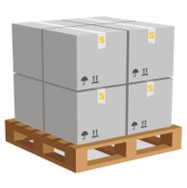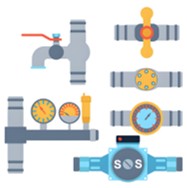
Untangling outfit numerics can feel like mapping a private cipher
- Recognising your body outline is the essential first action
- Capture accurate bust, waist and hip numbers to avoid errors
- Refer to brand-specific size tables before buying
Avoid trusting tag numbers alone as they mislead often Opt to use your measurements to crosscheck the chart. Discovering wardrobe identity is an individual experiment.
Demystifying the art of size references
Measurement mismatches create widespread shopper frustration. Navigating fit tables often feels like working through a challenge, because markers vary from maker to maker across markets. Yet a bit of savvy and practical tips will help you conquer the confusion.
- Kick off by mapping which regional sizing the maker adopts. Usually size guides use US, UK, EU and various Asian designations.
- Afterwards, align your chest, waist, hip and overall length numbers. Align these dimensions with your own measurements.
- In conclusion, follow the label's size recommendations for nuances. Labels sometimes provide clarifications, tailoring tips and advice.
Finding your ideal fit when shopping
The world of fit charts frequently presents challenges. Brands differ so standard labels like medium can shift meaning. Discrepancies result from brand-specific scaling systems. Consequently first take careful measurements of your body. Secure a tailor's tape to measure chest, waist and hip values. Avoid assuming your regular size always guarantees fit. A single brand's styles often affect how true a size runs. Uncovering the correct size can mean sampling several styles.

Deciding on stock sizes or personalised fitting
Choosing dimensions for fixtures often requires standard or custom picks. There are benefits and drawbacks to either approach. Standard offers convenience and usually lower expense. Custom solutions match specific design or space-related requirements
- Think through practical needs and spending limits before choosing
- Determine exact measurements to inform the selection
- Compare sellers and their offerings before committing
In the end the right dimension relies on your individual case.
Working through international measurement swaps
Switching among country and label sizing often confuses shoppers. Luckily, charts and calculators simplify cross-system translation. First, acquaint yourself with typical clothing and shoe scaling frameworks. Utilize translation charts to convert one system to another. Note that body type and proportions guide ideal selections. Scan buyer feedback and fit notes for practical sizing insight.
An easy path to decoding garment sizes
Sifting through sizing systems can be overwhelming. Designers commonly adopt independent measurement schemes, nevertheless these guidelines provide practical help for shoppers.
- Primary action: take accurate measurements with a fabric tape
- Then, see how your numbers correspond to the guide supplied
- Mind your silhouette because it changes fit expectations
In short, testing garments is the definitive method to verify fit.
An extensive guide to both men's and women's fit ranges
Size charts perplex many, especially with online purchases. Hence we've put together a comprehensive manual for gendered charts. Whether selecting pants, shirts or dresses the guide supports you.
- First tip: know that different brands and regions mean different sizes
- Also, record waist, hip, bust and chest dimensions precisely
- Lastly, choose the larger size if your numbers land between charts
Adopting these practices makes reading size charts straightforward. Enjoy your shopping experience!

Essential tips for choosing children's clothing sizes
Figuring out correct kids' sizes can be a demanding task. Children's quick growth cycles mean constant size updates. Prefer the vendor's size guide over age-based assumptions. Record your child's chest, waist and stature for proper fitCorrectly measuring bust, waist and hip for fit accuracy
Finding garments that suit you needs precise body figures. Use a soft measuring tape and a helper for best accuracy. Stand tall but relaxed with feet separated and shoulders soft
From XS through XXL: understanding size ranges
The current world of sizing contains many inconsistencies. Inter-brand differences often prevent uniform sizing standards. A careful examination of size bands will aid understanding. Together we'll unpack the real implications of size labels!
Supporting body diversity and inclusivity

Acceptance of all sizes celebrates human variety and worth. It requires overturning standards that define one correct size. We should nurture communities that support body confidence for all.
- Adopt routines that strengthen body confidence and care Make a habit of embracing body positivity Size Chart in everyday life Make a habit of embracing body positivity in everyday life Opt for daily practices that reinforce body love
- Remember that beauty exists across many shapes and sizes
- Push back against imagery that enforces a single beauty template
- Adopt routines that strengthen body confidence and care
